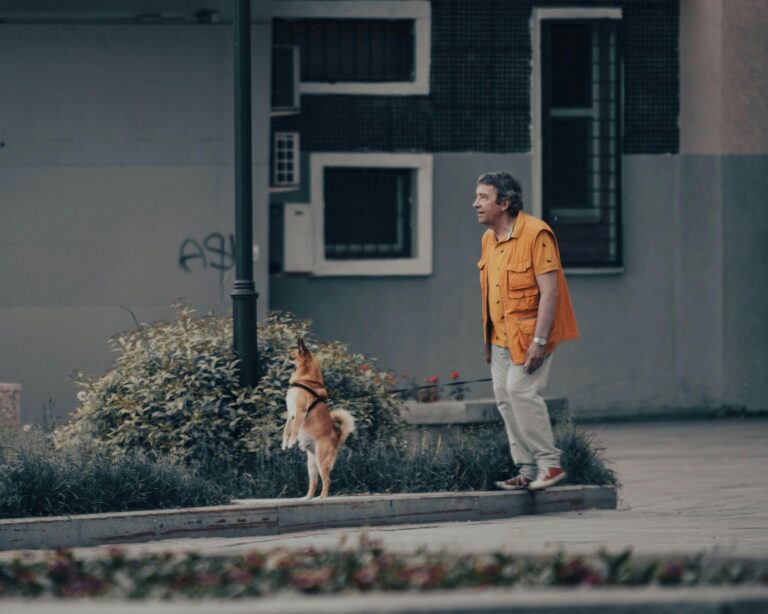Every Veterans Day, we honor the brave men and women who have served our country. Many of them return home carrying invisible wounds that can make daily life difficult. For these heroes, dogs are not just companions. They are lifelines.
As professional trainers, we see firsthand how structured obedience training can help veterans and others living with post-traumatic stress disorder (PTSD) or anxiety. A well-trained dog provides comfort, emotional grounding, and renewed independence.
Let’s explore how obedience training transforms the bond between handler and dog into something truly life-changing.
The Healing Power of Dog Training for Veterans
Training is about communication and trust. For individuals with PTSD or anxiety, those two elements are often what they miss most after returning to civilian life. Working with a dog creates a partnership based on calm leadership and consistency, which can help reestablish emotional stability.
Through obedience, the handler learns patience and focus while the dog gains confidence and reliability. Together, they form a team that supports emotional healing.
Why Obedience Matters for Emotional Support
Obedience training does more than teach commands. It builds mutual understanding. A well-trained dog can recognize changes in their handler’s body language or tone, responding with calmness or reassurance.
Common commands like Sit, Down, Come, and Place are not just behaviors, they are tools for managing stressful moments. For veterans experiencing flashbacks or panic, these structured interactions bring grounding and comfort.
Our Basic & Advanced Obedience Program provides the foundation to create this dependable partnership, emphasizing calm behavior, trust, and respect in all environments.
How Dogs Reduce Anxiety
A calm, obedient dog can interrupt anxious thought patterns by redirecting attention to a task. The simple act of issuing a command and seeing a reliable response helps the handler regain control.
Studies have shown that dogs help reduce cortisol levels (the stress hormone) while increasing serotonin and dopamine, which improve mood. This emotional feedback loop strengthens through structured routines.
The American Kennel Club reports that regular interaction with dogs promotes calmness, lowers blood pressure, and helps manage symptoms of depression and anxiety.
Checklist: How Obedience Training Supports Mental Health
- Builds communication and trust through consistency
- Teaches patience and emotional regulation
- Strengthens the bond between handler and dog
- Provides purpose and daily routine
- Offers grounding during anxiety or panic
- Reduces isolation and increases confidence
Real-World Benefits for Veterans
Veterans who participate in obedience or service dog training often experience:
- Fewer panic attacks or emotional outbursts
- Improved sleep patterns
- Increased willingness to engage socially
- Greater sense of control in public spaces
- Renewed motivation and focus
Training provides structure that mirrors the discipline many veterans practiced during service. It brings stability back into everyday life.
Building Confidence in Public
Many people with PTSD feel anxious in crowded or unfamiliar environments. Obedience training helps both the dog and handler remain calm and composed.
Commands such as Heel, Place, and Focus teach the dog to stay attentive, which helps the handler feel safer and more in control.
For more tips on training for focus and reliability in public, see our post on how to keep your dog focused during group activities.
Frequently Asked Questions
- Can obedience training really help with anxiety and PTSD?
Yes. The structure and partnership built through training can reduce stress, improve confidence, and create emotional balance. - Do I need a service dog to benefit from training?
Not necessarily. Even a family pet trained in obedience can provide emotional grounding and companionship. - How long does it take to see results?
Progress depends on consistency and the individual. Most handlers notice improvements in focus and calmness within a few weeks of regular training. - Can older dogs be trained to help with PTSD?
Absolutely. Age does not limit a dog’s ability to learn or provide comfort. Older dogs often adapt quickly to calm, structured training. - What if I do not have experience training dogs?
Our trainers work one-on-one with each handler, providing clear steps to make the process approachable and rewarding.
Giving Back To Veterans Through Training
Training is not just about control or obedience. It is about connection, purpose, and healing. For veterans and others dealing with anxiety or trauma, the relationship formed through training offers a renewed sense of peace.
Our Basic & Advanced Obedience Program helps build that foundation, empowering handlers and dogs to work together with confidence and trust.
If you are a veteran or someone struggling with anxiety, reach out through our contact page to learn how training can change both your life and your dog’s.


